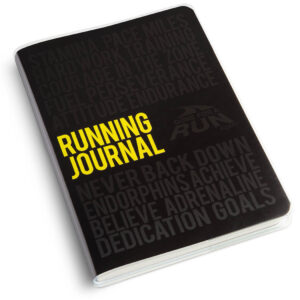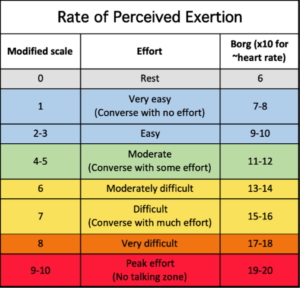Return To Racing – Preventing Injury In 2021 (Part 1)
Guest Blogger: Miriam Salloum (PT OCS COMT) // The Runner’s Mechanic
 So yay, 2021! Runners are grinning from ear to ear about the possibility of a more normal race year, and itching to get back to running groups and PRs (personal records!)! I am a physical therapist here in Asheville NC who has worked with runners for the last 20 years. I have been thrilled to see the running community thrive despite these COVID times, and I am very committed to helping runners emerge out of it with good health and peak performance.
So yay, 2021! Runners are grinning from ear to ear about the possibility of a more normal race year, and itching to get back to running groups and PRs (personal records!)! I am a physical therapist here in Asheville NC who has worked with runners for the last 20 years. I have been thrilled to see the running community thrive despite these COVID times, and I am very committed to helping runners emerge out of it with good health and peak performance.
So how do we get back into training after a pandemic and not get injured?
Do you remember in the beginning of the pandemic when the “stay at home” order hit and we immediately laced up our shoes and we ran like crazy? In my physical therapy practice I saw an unprecedented spike in injuries, especially stress fractures and tendon pain. This was seen nationwide.
There are a few key elements that this pandemic has presented that increase the risk for injury especially when we return to organized training. Here are the top things to try that can decrease chances of injury as you get back to your race season!
Did you know the #1 cause for all injuries are training errors? This is the easiest thing for runner to have control over.
 Get a running journal, write down your miles, and track your intensity! One of the biggest hiccups I see when people return to race season is they are accidentally putting in TOO MANY miles or too many high-intensity miles. The pandemic set up the perfect storm for disorganized training. In some ways this was good for many runners allowing them to have more ease in their running schedules, maybe a bit more opportunity for fun runs and a break from strict training. If you commit to a race goal in 2021, start to make a plan.
Get a running journal, write down your miles, and track your intensity! One of the biggest hiccups I see when people return to race season is they are accidentally putting in TOO MANY miles or too many high-intensity miles. The pandemic set up the perfect storm for disorganized training. In some ways this was good for many runners allowing them to have more ease in their running schedules, maybe a bit more opportunity for fun runs and a break from strict training. If you commit to a race goal in 2021, start to make a plan.
MILES
If you are looking at signing up for races, pick your event and add structure to your training with either a training plan you find online or with a coach. No matter how big or small the event, even if it is a distance you have done before, we need to treat your training plan seriously. Our bodies have been emotionally and physically under such different duress during the pandemic, decreasing any chaos from “catch-up” training can help eliminate extra stress.
When your schedule has you down for “X” number of miles and only a certain percentage of those will be a hard effort, stick to that. Social runs with friends, brewery runs, running with your kids or pets at the end of the day, or joining an online daily “streak” contest are all “MILES” and you need to account for these in your running log. If they exceed your plan you need to whittle this down to get back on track and not deter your training.
INTENSITY
We all have heard it from the best coaches and runners in the world: “ Easy runs should be easy and hard runs should be hard” But how do we judge this? Using a chest-strap heart rate monitor you can use the percentage of your maximum heart rate to gage intensity , or you can use a scale called the Modified Borg Scale of Rate of Perceived Exertion (RPE) to judge your intensity by how you feel.
Usually a “2 or 3” on the RPE scale is what we use for an EASY day and a “6 or 7” on a HIGH INTENSITY day. Most plans have a very low amount of weekly miles at high intensity. This is for a physiologic reason to actually improve performance.

RPE is proven to correlate directly to:
- Heart Rate
- Oxygen Consumption
- Muscular Exertion
- Lactate Acid
- Emotional Stress
- Core Body Temperature
This is an easy way to get alot of good information. Try using this consistently when you start your training with mental check-ins throughout your run
In part two we’ll focus on non-running exercises and stretching.
About the Author
 Miriam Salloum is owner and director of The Runner’s Mechanic Physical Therapy Clinic and has practiced orthopedic and sports physical therapy since 2000 while residing in Asheville, NC. She specializes in the treatment of running injuries with a background in foot and ankle rehabilitation, foot orthoses fabrication, taping techniques, spine and lumbopelvic neuromuscular reeducation, spinal manipulation, and the biomechanical analysis of running gait. Miriam also specializes in dry needling techniques, also known as Intramuscular Manual Therapy (IMT), to reduce pain and restore normalized function of the neuromuscular system appropriate for most patient populations. In 2016 Miriam became the physical therapist for the Olympic Training Site under the Center for Excellence for Sports Science in Johnson City where she rehabilitated Olympic athletes in bobsled and track and field sports.
Miriam Salloum is owner and director of The Runner’s Mechanic Physical Therapy Clinic and has practiced orthopedic and sports physical therapy since 2000 while residing in Asheville, NC. She specializes in the treatment of running injuries with a background in foot and ankle rehabilitation, foot orthoses fabrication, taping techniques, spine and lumbopelvic neuromuscular reeducation, spinal manipulation, and the biomechanical analysis of running gait. Miriam also specializes in dry needling techniques, also known as Intramuscular Manual Therapy (IMT), to reduce pain and restore normalized function of the neuromuscular system appropriate for most patient populations. In 2016 Miriam became the physical therapist for the Olympic Training Site under the Center for Excellence for Sports Science in Johnson City where she rehabilitated Olympic athletes in bobsled and track and field sports.
She has been a national presenter for North American Seminars for the past 4 years which allows her to educate health professionals in the most recent techniques for treatment of running related injuries. She models her approach to runners’ rehabilitation after the Speed Clinic & Center for Endurance
About Glory Hound Events
Glory Hound Events was started in 2006, initially managing the historic Bele Chere 5K. Shortly after that first year the Lake Logan Triathlon was introduced and eventually became a part of the Lake Logan Multisport Festival. Glory Hound Events is now the largest endurance event management company in the Western North Carolina region, producing an average of eighteen events annually. In addition to producing its own events and those for a variety of clients, Glory Hound Events offers consulting services for events outside of Western North Carolina looking to take theirs to the next level.
